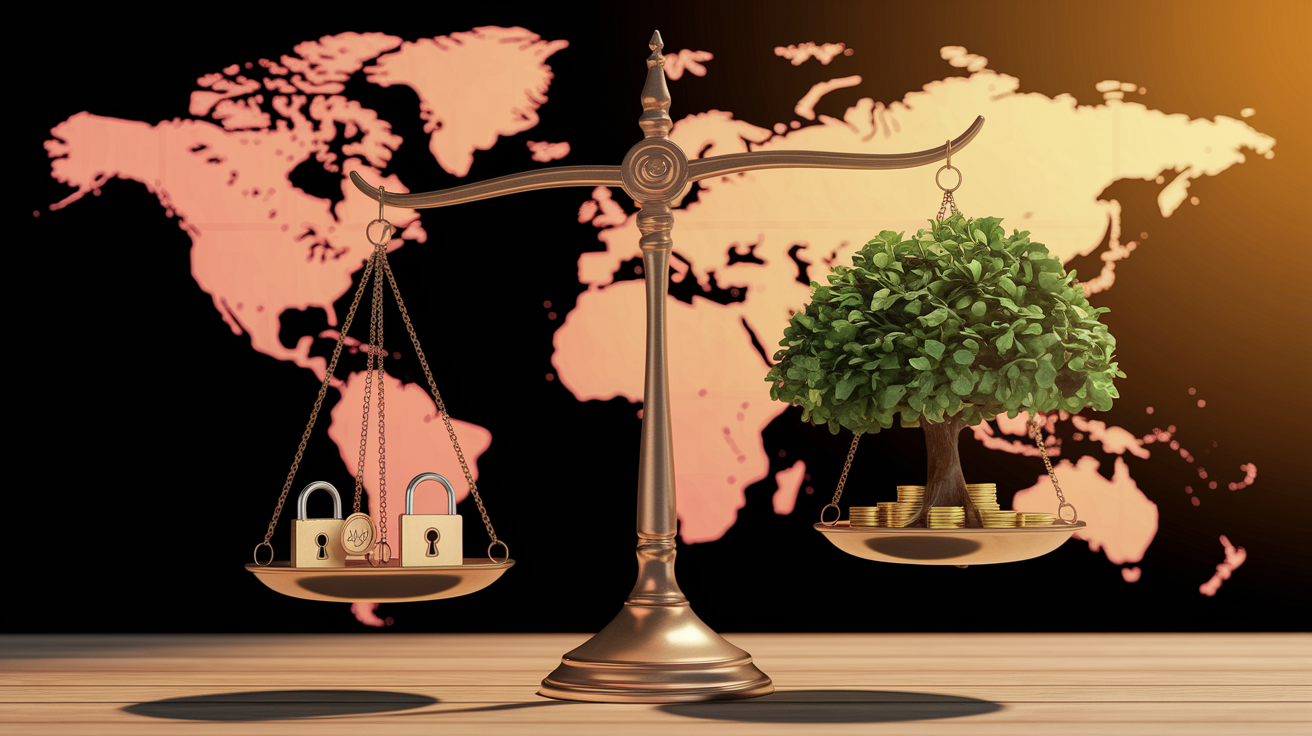Investors must choose between growth stocks in emerging markets and those in industrialized countries. Both options offer unique opportunities and risks. While emerging markets often attract with higher growth rates, industrialized countries provide greater stability. This dynamic is crucial for investment strategy. The following chapters shed light on the political and economic stability, as well as the innovation capacity of both markets, to facilitate informed investment decisions.
Germany in Balance: Political Stability and Economic Dynamics

Political Stability: Germany is currently in an era of political stability, bolstered by the recent electoral victory of the Union under Friedrich Merz. This political calm provides, in a sense, a breath of fresh air after a period of uncertainty. However, despite this positive change, the challenges are immense and require strategic precision from the new government. A fundamental issue is the debt brake, which acts as a fiscal corset and drastically limits room for reforms. This brake is deeply rooted in the fundamental law, and modifying it is difficult, especially since the strong representation of the AfD and Die Linke in the Bundestag can effectively block any constitutional amendments. At the same time, international relations, particularly with the United States, are being tested by missed NATO spending targets, which could lead to a trade conflict. All these factors require a high level of diplomatic sensitivity, especially at a time when populism increasingly challenges multilateral cooperation.
Economic Factors: Through complex economic challenges, Germany is struggling to maintain its position as an economic powerhouse in Europe. The current phase of weakness, characterized by a slight decline in economic output and minimal growth prospects, is the result of cyclical and structural stagnation. Causes such as demographic change, geopolitical uncertainties, and a high bureaucratic burden make it difficult for the economy to adapt. Export crises, particularly in relations with China, and threats of US tariffs increase uncertainties. Private consumption is weak, while the savings rate increases, further dampening purchasing behavior. Therefore, the German government is pursuing a supply-oriented policy aimed at provoking growth spurts through public investment. These investments also focus on combating structural obstacles such as the shortage of skilled labor and excessive bureaucracy. The energy policy cannot be overlooked, a crucial point for ensuring the competitiveness of industry and alleviating economic burdens for citizens. It is essential that Germany, through effective reforms and tailored investments, strengthens both economic stability and political confidence.
Technological Pioneers and Market Arena: Potentials for the 21st Century

In the global economy, innovation capacity and growth opportunities play a decisive role in the success of companies and sectors. Emerging and industrialized markets present different yet equally fascinating landscapes. Emerging countries like India, South Korea, and Taiwan are making significant progress in technological research, particularly in the IT services and semiconductor manufacturing sectors. These countries are in a phase of dynamic development, laying the groundwork for strong growth.
Germany in International Comparison
While emerging markets distinguish themselves by high growth rates, industrialized countries such as Germany show another face of innovation. Here we observe specific sectors that are at the forefront, despite an overall average innovation index in the European comparison. German companies in the electronics and chemical sectors have established sustainable innovation pathways through continuous research and development. In particular, the automotive industry, led by players like Robert Bosch, stands out for its high number of patent applications.
Challenges and Strategies
However, the landscape of growth opportunities is not without challenges. Bureaucracy and slow approval processes can hinder the speed of innovation. To fully exploit the potentials, not only are greater investments in key technologies like artificial intelligence and robotics necessary, but also the shortage of skilled labor must be strategically addressed. Both emerging and industrialized markets need to invest in digital and physical infrastructures to fully reap the benefits of innovation capacity.
Sectors of the Future in View
Looking ahead to the coming decades, various studies highlight sectors that promise significant growth: from biotechnology to logistics to the aerospace industry, these sectors not only reflect technological advances but also a commitment to a sustainable future. Germany and other industrialized countries have the opportunity, through strategic policies, to strengthen their role as a driver of innovation.
With the interaction between technological innovations and growing markets, it emerges that the balance between innovation and market opportunities remains the key to success in the global economic arena of the 21st century.